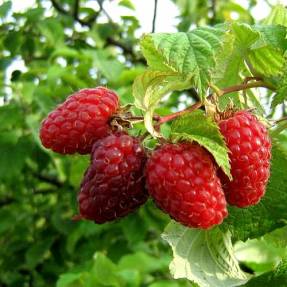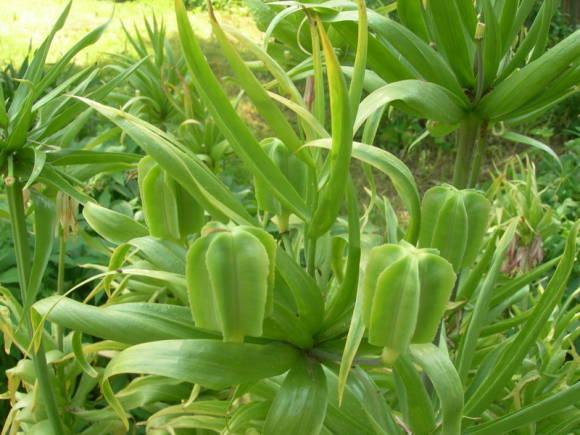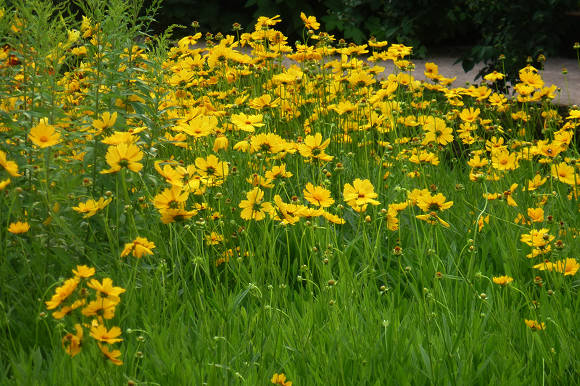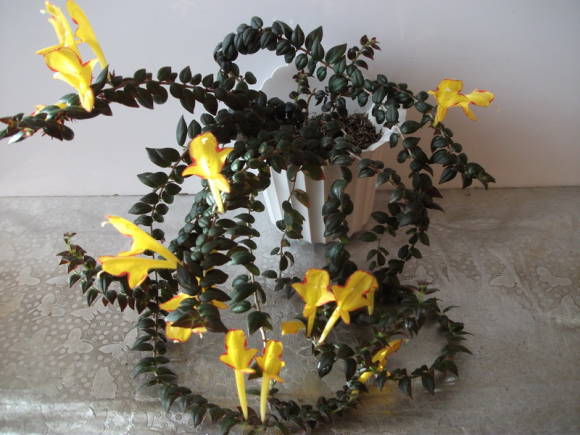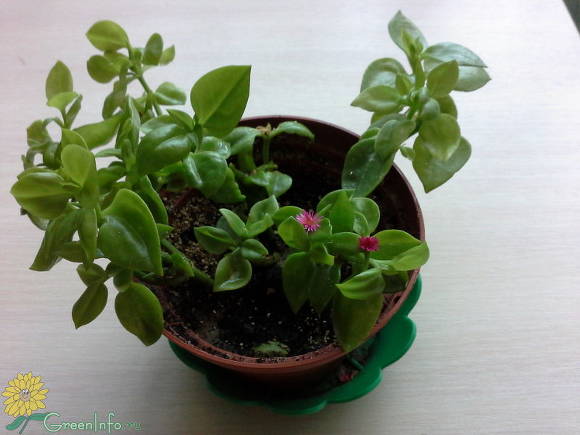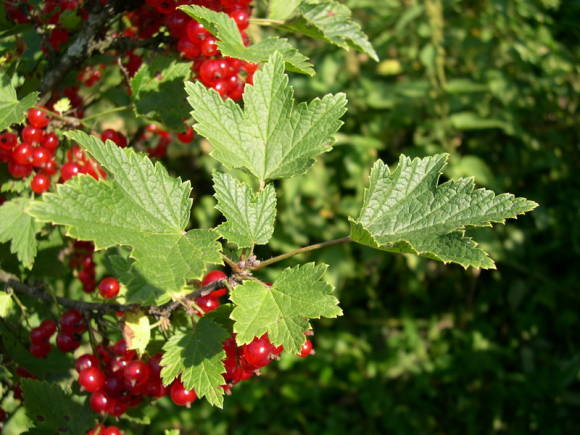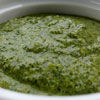
My dacha is located in the Leningrad region. Our weather conditions, we seem to be frank, are not the most favorable for growing thermophilic vegetables. But there is always a way out. For example, I grow cucumbers in a greenhouse and do not complain about the harvest.
Preparation of beds for sowing seeds
It is better to cook the garden in the fall. Before you start digging it, you need to add 1 sq. 0,5 compost buckets, 2 tbsp. tablespoons of superphosphate and 1 glass of ash.
But if such work was not carried out in due time, they will have to be postponed to the spring. 10 days before sowing seeds in the center of the garden bed in the greenhouse, I dig a trench deep into the bayonet of a shovel. I put rotted manure, old sawdust, peat, ash there. I pour it with hot water. You can use the following solution: 1 g of potassium permanganate per 10 liters of water or 1 tbsp. spoon of liquid sodium humate in the same volume of water. After that, the beds must be covered with a clean film before planting seedlings or sowing cucumber seeds.
The day before sowing, I water this trench with Fitosporin-M solution (1 tablespoon per 10 liters of water).
Hybrids that I prefer
I do not plant cucumbers all at once - a few pieces later, 2-3 weeks after the main batch.
The regulars of my greenhouse: F1 Connie, F1 Khasbulat, F1 Prestige, F1 Masha, F1 Courage, F1 Mamenkin Lyubimchik, F1 Herman, F1 Claudia. I also plant 1-2 bushes of F1 Chinese Cold-Resistant.
Different seeds, different approach
- I do not disinfect seeds purchased through specialized retail chains. I keep them on germination in sphagnum moss until a good lobe of roots is formed, after which I plant them in 0.5-l glasses.
- When using seeds taken from gardeners or collected by you from your vegetables, it is better to subject them to processing. That is, first disinfect in a disinfectant solution that you like, and then hold it in a nutrient solution of any Humate or Epin.
- For sowing, large, even seeds of cucumbers of a uniformly light color are selected. First of all, deformed and unnaturally colored seeds (dark or stained) are subjected to rejection.
- High germination is observed in 2-3-year-old seeds. If you do not have such seed, try to create certain conditions for one-year-old seeds that will help improve their quality: store them in a warm, but dry place (at a temperature of at least + 25 ° C).
We plant with an eye to the harvest

It is necessary to sow cucumbers at such a time that they do not fall under return frosts. Dry seeds are sown early, and germinated - later, because they can rot when in cold soil. Above, small arcs are installed, on which they throw white covering material in case of frost, and, in fact, to increase the temperature, that is, for better seed germination.
I plant ready-made seedlings in the greenhouse. On the arcs above it I throw spunbond No. 60, and on top - a transparent film with a thickness of 120 microns. In case of night frosts, I install an electric heater under the arches. On sunny days, I rent additional shelter. In cloudy - I leave only the ends open or slightly open only on one side of the end.
When planting in the ground in a permanent place, the age of the seedlings should be no more than 25 days (from the moment of germination). I plant her in a greenhouse garden on May 15. Accordingly, I bet on sprouting on April 12-14. I plant in one line in a garden bed, the distance between plants is 30 cm (you can leave more). In my greenhouse 6x3 m there are 18-20 bushes (I plant on one side).
When planting seedlings of cucumbers at a distance of 1 cm from the root, I put 1 tablet of Glyocladin, then the cucumbers do not get sick with root rot.
After planting, I spill it well with warm water (rainwater) and mulch with peat.
What is a trench for?
Initially, my cucumber seedlings are in a trench, below the soil level in the greenhouse. When the plants grow, I gradually add the earth to form additional roots.But by the middle of summer, the roots still turn out to be very close to the soil surface, and in order not to accidentally damage them, I add the soil again. And also closer to autumn I lower the cucumber stalk by 20-30 cm and sprinkle it with earth, due to which the root system grows, and hence the additional harvest.
Pinching with calculation

Starting from the moment the cucumber lash grows and until the 5th leaf is formed on it, I remove all ovaries, mustaches and stepsons. On the part that grows higher, I leave 1 cucumber and 1 leaf on the stepsons (side shoots), after which I pinch this stepson. I do this until the plant reaches 50 cm.
Then I leave 2 cucumbers and 2 leaves on a pair of stepchildren, on the next pair - 3 cucumbers and 3 leaves, and so on. When there is 1 m left to the trellis (the wire stretched under the roof along the bed), I no longer pinch the side shoots on the lash and stop removing the whiskers. If you continue to remove the mustache further, the bush will fall to the ground under its weight.
When the central and side shoots reach the trellis wire, I throw them over this wire and direct them down. Or I pass a string across the greenhouse from the trellis, and then the whip clings to it with a mustache and grows under the ceiling of the greenhouse.
I remove the fruit bearing shoots. I remove only diseased, waste leaves. Healthy, green - don't touch!
Free and effective feeding
I feed cucumbers only with organic fertilizer. In the greenhouse, I put nettles, dandelions and other herbs in a large barrel. I fill two-thirds of the container with greens. I add a couple of buckets of cow dung, top up with water, leaving 10 cm to the upper edge, mix the contents well and cover with foil. After a week or two, the fertilizer is ready (it all depends on how warm it is in the greenhouse).
A day before feeding the plants, I prepare an infusion of ash at the rate of 2 liters of a can of ash per bucket of water.
When feeding the plants, I mix the ash infusion (1 l) with the herb infusion (2 l), add water to 10 l, stir and pour under the cucumber bushes 1 l per root on wet soil.
I carry out root dressing every 10 days. And foliar (I spray it on the leaf) - with a frequency of 1 time in 3 weeks, using ready-made fertilizers with microelements.

Milk + iodine and other secrets
Lack of nutrients in the soil weakens cucumber plants, they become more susceptible to disease and become less resistant to pests. Therefore, it is so important to feed the cucumbers correctly and on time. If the plants look sick, you need to recognize the cause and start fighting as early as possible. If diseases and pests nevertheless appear, I use biological products: against pests - Aktofit, Bitoxibacillin; against diseases - Planriz, Alirin-B + Gamair, Glyocladin and so on - what is available.
And even better - timely prevention of diseases.
- Starting from the phase of 3-4 leaves, I process cucumbers with the following composition: add 20 drops of iodine, 20 g of laundry soap (rubbed into foam) and 1 liter of low-fat milk into a bucket of water. I spray cucumber plants with this composition on the leaves from the inside and outside.
- Plants can be processed with dairy serumwithout divorcing her.
I alternate homemade fungicides every 10 days with a solution of Trichodermin or Fitosporin-M.
Why cucumbers are bitter
- It often happens that during active fruiting, cucumbers, due to the contrast of the exhausting daytime heat and sharp nighttime cold snaps, which are not uncommon in central Russia, get stressed. This means that the fruit will taste bitter, accumulating a substance called cucurbitacin.
- The combination of heat and dryness in the soil also results in an unpleasant taste. Do not allow the soil to completely dry out; cucumbers should be watered regularly.
- Cucumbers also taste bitter after watering with cold water and during prolonged cold damp weather.
- Choose specially bred varieties and hybrids of cucumbers, in the genetic code of which there is a gene for resistance to bitterness.Usually on the bags it says “no bitterness”.
Read also the article Why are cucumbers bitter?
Photo by the author
Newspaper "Universal lunar calendar of the gardener and gardener 2020. Cucumbers"
